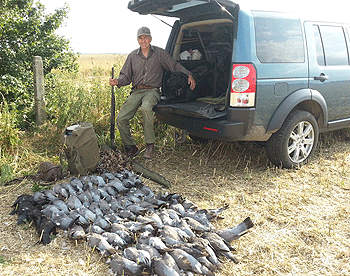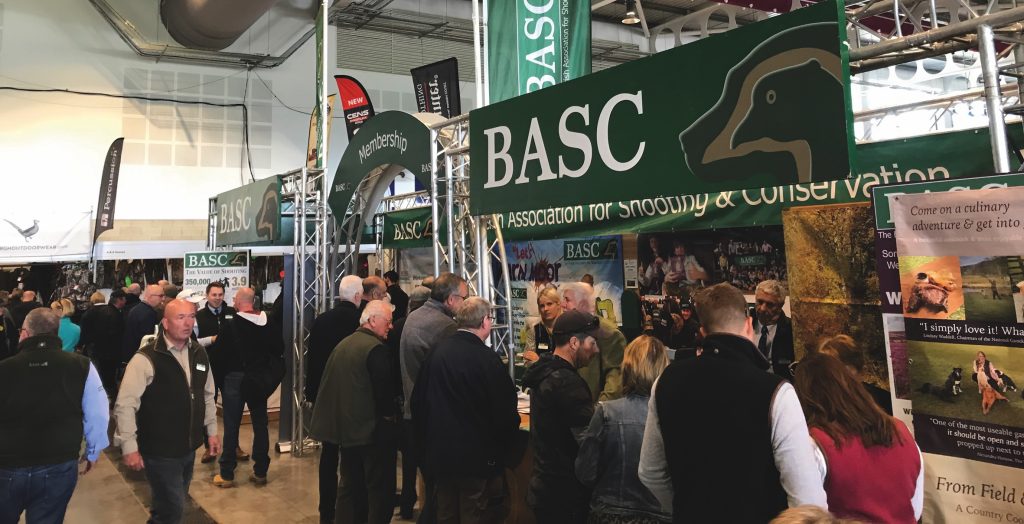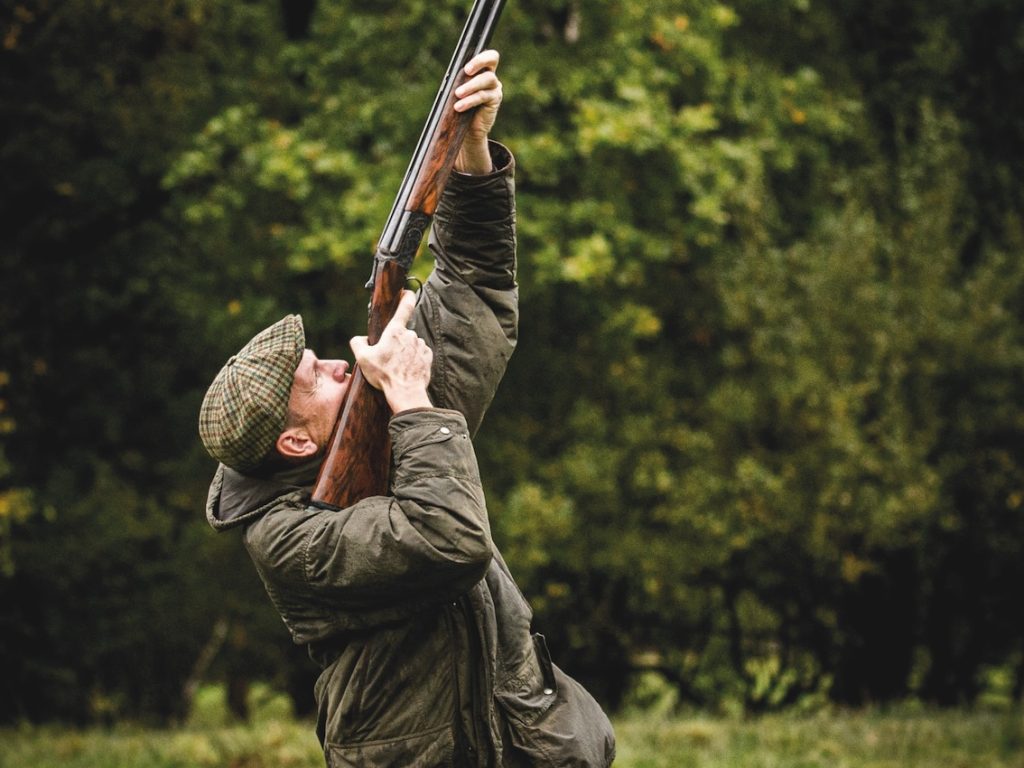Win CENS ProFlex DX5 earplugs worth £1,149 – enter here
Summer stubble
<strong>A day out pigeon shooting during the harvest</strong>

The first cut fields are a welcome sight to both pigeon and pigeon shooter alike. Shooting over barley and wheat stubbles makes August one of my favourite times of year. There are many advantages, including the better weather, easy access to the hide area with your vehicle, and longer days that enable afternoon shooting and make shot birds easier to find.
Winter rape naturally matures before spring rape and is one of the first crops to be cut into swathes and left to dry out for combining a week or so later. The early cut fields of rape or barley are a big draw for pigeon, which leave the woods in early-to-mid-afternoon, drop on to a warm southwesterly wind and make their way to their chosen fields. It can be quite a sight as they stream from their holding woods or sitty trees. Sometimes their journey may be only a short distance of a field or two, but it can be several miles.
Those who regularly shoot pigeon will share with me the thrill at finding their flightlines. When their destination is found, there is even greater excitement when several hundred pigeon get up near an oak tree with a good south-westerly wind coming from behind a large hedge — especially if there are no houses or buildings in sight, no footpaths, nobody working the field, no stock nearby, no rain forecast, no other food nearby, permission has been granted and there’s easy access to the hide position well away from the wood with nothing spoiling at home, and plenty of time in the day to shoot (I like a good four hours or more of shooting).
As we all know, it is a rare situation to have all the above aspects in one’s favour. Fortunately, I had nearly the full set at the end of July, which led to an interesting consecutive three days over some rape swathe and stubble on the same farm.
Afternoon reconnaissance
On returning from holiday the day before, I was eager to assess the pigeon picture, so I spent a full afternoon on reconnaissance. After 120 miles and little reward, except a few on the wires here and there, I went to a large wood and parked up at 5pm to see if I could pick up any return traffic. Sure enough, two pigeon, and then five more, then three and finally a single pigeon came drifting back from the north side and straight past my 4×4, returning cropped up to the woods.
With my binoculars trained, I could see they had come from the direction of a mixed farm about a mile away that I had not shot over for some time. I had seen enough and went home knowing exactly where I would head to the following day.
Late the next morning, I drove to this secluded farm and re-acquainted myself with the owner. He said he had cut two fields of rape either side of the farm and had seen approximately 100 pigeon on each. They were not large fields, and the smaller one was part swathe and part stubble after he had just combined half, leaving the rest to dry out a bit more after a spate of summer showers.
The perfect conditions outlined above were all there, apart from the presence of cattle in the adjoining field, of which I would have to be mindful. The wood was in view, but far enough away for the sound of the shot not to carry, especially as the wind was coming from the wood. Rape stubble is not the best to drive or walk over, or for dogs to work in, but my Labradors don’t seem to mind.
Most importantly, the pigeon were interested — there were about 100 on the field and more in the air, either passing over to the other field or turning to join the others in the one I was in. You can’t beat seeing pigeon traffic, as it is a sure sign they have found food, are keen and are therefore likely to return.
I decided not to go to a tempting pair of oak trees at the end of the field, where 20 or so pigeon were sitting, preferring instead to cover the majority of the field by making a hide right in the centre on the last row of swathe before the stubble started, using some of the swathed rape to cover the netting. I was set up by midday and shot till 4pm, having to finish early due to another commitment. I could have shot a few more, but it was still a memorable bag of 127 pigeon for 161 shots.
Coming back for more
There were enough pigeon passing to and from the other field to encourage me to return the following day. My shooting friend, Mike, was unable to come, so I flagged the other field, as there were only 40 pigeon on it. I set up just downwind of the two oaks at 1.30pm and shot an enjoyable bag of 51, mostly flighting, before packing up at 5pm. It was not as hot as the previous day, and was a slightly less hectic and even more enjoyable outing, though rather wet, as there were two heavy showers between 3pm and 5pm.
When I took the two flags up, I saw that the pigeon were still interested in the other field, so I decided I would push my luck by returning the next day. However, after speaking to the farmer, it seemed my luck had run out, as he intended to start combining the swathe at 2pm. I thought the birds might head for a large ash tree near the sugar beet when they saw his combine, as I had observed them coming from that tree to the rape, but I couldn’t be sure. I decided to give it a go and though I shot just 22 in three hours, it was again enjoyable. I might have shot another 60 or so birds if the farmer had not combined but, as I said, it is rare for everything to go the right way. I had had a satisfying three days on the same farm, shooting 200 pigeon and resulting in a happy farmer, his rape in the store and a pigeon problem sorted.
As the combines roll and more feeding opportunities appear, the pigeon will spread out again and make shooting them harder, but with careful observation you can find their favourite spots and hopefully enjoy some good days.
Related Articles
Get the latest news delivered direct to your door
Subscribe to Shooting Times & Country
Discover the ultimate companion for field sports enthusiasts with Shooting Times & Country Magazine, the UK’s leading weekly publication that has been at the forefront of shooting culture since 1882. Subscribers gain access to expert tips, comprehensive gear reviews, seasonal advice and a vibrant community of like-minded shooters.
Save on shop price when you subscribe with weekly issues featuring in-depth articles on gundog training, exclusive member offers and access to the digital back issue library. A Shooting Times & Country subscription is more than a magazine, don’t just read about the countryside; immerse yourself in its most authoritative and engaging publication.







